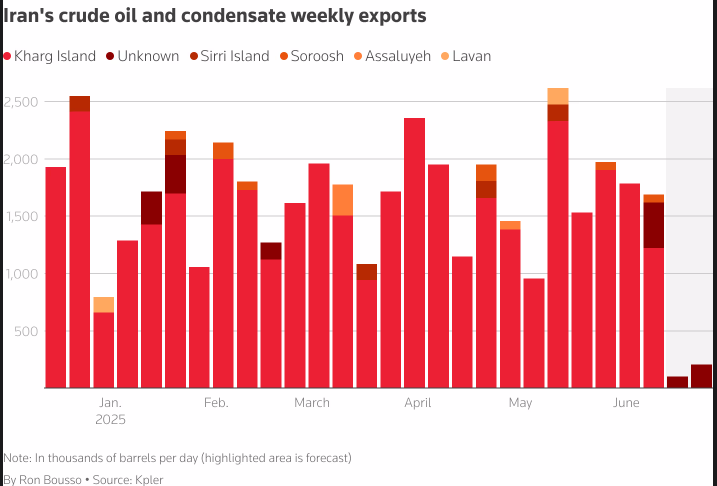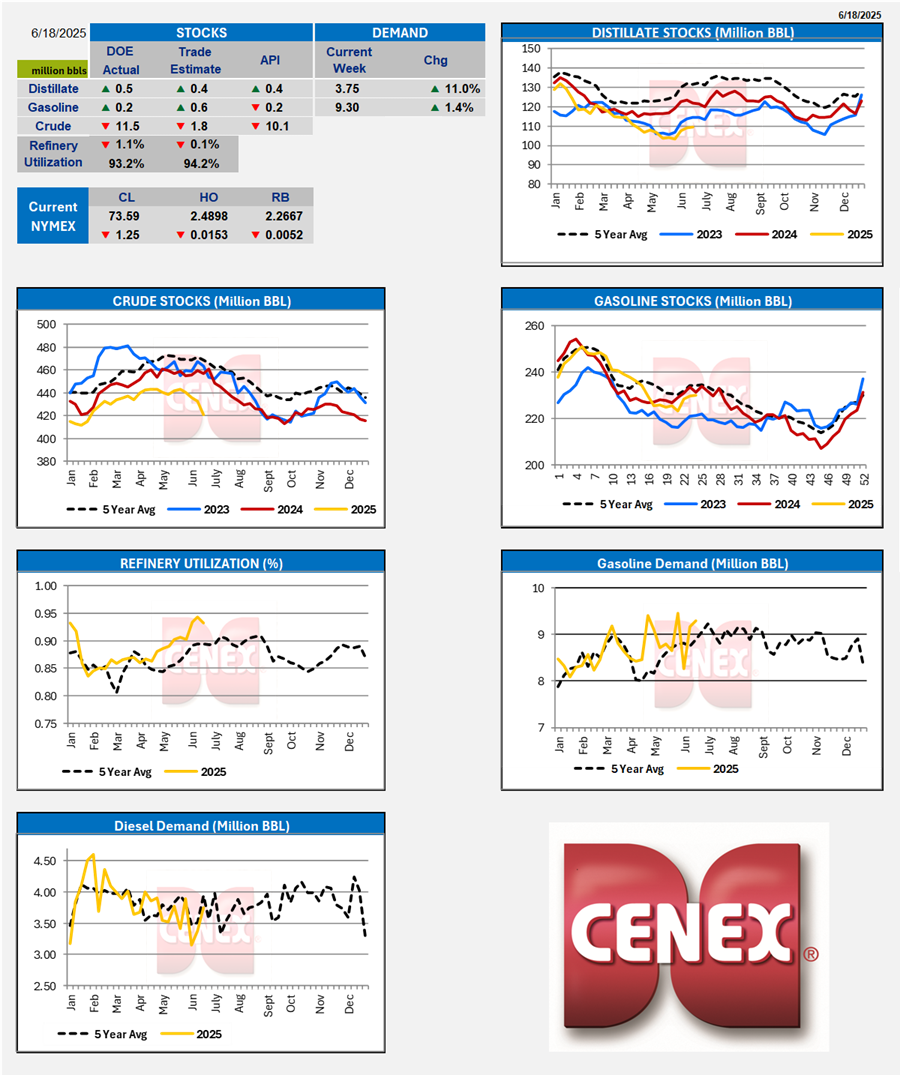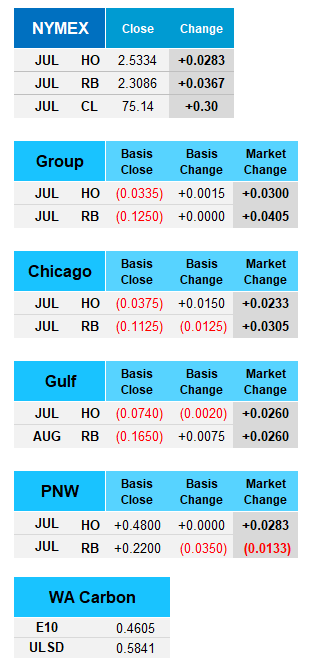OPEC+ June 2025 Report: OPEC+ published its Monthly Oil Market Report for June 2025, reaffirming its global crude demand growth projections at 1.29 million barrels per day for 2025 and 1.28 million bpd for 2026. On the supply front, OPEC+ production averaged 41.23 million bpd in May, reflecting a 180,000 bpd increase from April. Saudi Arabia led the production gains with a 177,000 bpd rise, reaching 9.18 million bpd, while Iraq registered the largest decline, decreasing output by 50,000 bpd to 3.93 million bpd. Looking ahead, non-OPEC+ producers are expected to account for approximately two-thirds of the anticipated global capacity increase, expanding output by 3.1 million barrels per day. Meanwhile, OPEC+ plans to contribute nearly 2 million barrels per day. Together, Saudi Arabia and the United States are projected to represent 40% of total global oil capacity growth during the forecast period.
Energy Stock Reports: Tuesday afternoon the API Energy stocks were released reporting a draw on crude of 10.133 million barrels, a build on distillates of 318,000 barrels and a draw on gasoline of 202,000 barrels. (The EIA will be releasing their report at 9:30am CST this morning.) The early estimates poll for the EIA/DOE call for a draw on crude of 1.79 million barrels, a build on gasoline of 440,000 barrels and a build on gasoline of 627,000 barrels. Refinery utilization is expected to hold steady with a slight drop of just 0.1%.
European Refineries: European oil refineries are undergoing a significant transformation as they face declining demand for traditional fuels and increasing pressure to decarbonize. Industry leaders warn that without adapting to low-carbon technologies, many refineries risk closure by 2035. The International Energy Agency (IEA) forecasts that up to 1.5 million barrels per day of refining capacity in Europe could be at risk of closure by 2030 due to reduced demand for road fuels and increased competition from modern refineries. Refineries unable to integrate carbon capture, biorefining, or electrification technologies may face shutdowns. Older and less complex refineries are usually at a disadvantage when competing with new refineries in Asia, the Middle East and Africa for a share in these declining markets. Carbon costs will accelerate closure for some and force investment in new technologies and more efficient
Market Overview: Oil prices are relatively stable this morning as markets assess the potential for supply disruptions stemming from the ongoing Iran-Israel conflict and consider the implications of possible U.S. involvement. On Tuesday, former President Trump calling for Iran’s “unconditional surrender” a demand that was firmly rejected by Khamenei on Wednesday. Market attention will also focus on two key developments, the upcoming EIA Energy Stock Report, which is expected to confirm whether there was a significant crude inventory drawdown of approximately 10 million barrels, and the latest Federal Reserve update, which may offer insights into potential changes in interest rates.
Iran - Oil Exports
While major oil and gas infrastructure in both Israel and Iran have so far remained largely unaffected, a significant development has emerged in the form of a sharp decline in Iran’s oil exports. Current projections indicate that Iranian crude and condensate exports will total just 102,000 barrels per day this week, dramatically lower than the year-to-date weekly average of approximately 1.7 million bpd. Prior to the recent escalation in tensions between Iran and Israel, Iran was producing an average of 3.4 million bpd of crude oil and 1.3 million bpd of condensate. China has continued to serve as the primary destination for Iranian exports..



Oil prices closed higher in today’s trading session as markets continue to assess the potential for supply disruptions stemming from the ongoing Iran-Israel conflict and the possibility of direct U.S. involvement. Geopolitical tensions remain elevated, particularly due to concerns over the Strait of Hormuz, a critical transit point for nearly one-third of the world’s seaborne oil. Iran has issued warnings that it will retaliate if the U.S. becomes militarily involved alongside Israel. Adding further upward pressure to prices, U.S. crude oil inventories experienced a significant and unexpected decline of 11.5 million barrels last week, bringing total stocks down to 420.9 million barrels.

